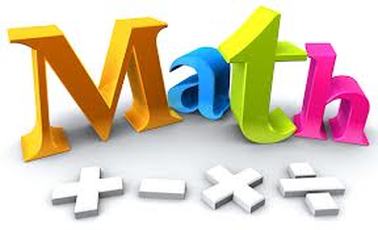Unit 1.1 Understanding Place Value and
Properties of Operations
Essential Questions
- How does the value of a place compare to the value of the place to its immediate right? (i.e.,
- What is the relationship between two adjacent place values in base 10?
- What are some ways you can represent the value of a digit in a multidigit whole number?
- How is place value used to read and write numbers up to 1,000,000? How do the commas help you read a number?
- How is place value used to write a number in its expanded form?
- How is place value used to compare two numbers?
- What is the meaning of the symbols <, >,and =?
- What are the strategies for rounding multidigit whole numbers to any place up to 1,000,000?
- Why does that strategy make sense?
- How can you explain the rounding process using a model such as a number line?
- What role does place value play in the standard algorithm for addition and subtraction?
|
|
|
Unit 1.2 Multiplying with
Whole Numbers to Solve Problems
Essential Questions
• When did you use the properties of operations in your multiplication strategy?
• What information is given and what information are you trying to find? How could you record this as an equation or number sentence?
• Based on the given information, what do you expect would be a reasonable answer? How did you make that approximation?
• How did you decide what operation to use?
- What information do the numbers in a multiplication equation represent? (e.g.,number of groups, size of the group, total number)
- How could you make a multiplicative comparison statement about a set of numbers (e.g., 3, 6, and 18)?
- How could you write your comparison statement as equation? (one possible
- How do additive and multiplicative comparisons differ?
- How can you draw a rectangular array or area model to illustrate a multiplicative comparison?
- What equation represents your drawing?
• When did you use the properties of operations in your multiplication strategy?
• What information is given and what information are you trying to find? How could you record this as an equation or number sentence?
• Based on the given information, what do you expect would be a reasonable answer? How did you make that approximation?
• How did you decide what operation to use?
- Why does that operation make sense?
Unit 1.3 Factors, Multiples, and Patterns
Essential Questions
• What are the factors of a number? How do you find them?
• How can you be certain you have found all the factor pairs for a given number?
• What are the multiples of a number? How doyou find them? How many multiples does a number have?
• How is a whole number related to its factors?
• How do you determine if a number (1–100) is a multiple of a given one-digit number?
• What is the difference between a prime and composite number?
• How do you determine if a number is prime or composite?
• Given a rule, how could you generate a pattern?
• What patterns do you notice?
• What are the factors of a number? How do you find them?
• How can you be certain you have found all the factor pairs for a given number?
• What are the multiples of a number? How doyou find them? How many multiples does a number have?
• How is a whole number related to its factors?
• How do you determine if a number (1–100) is a multiple of a given one-digit number?
• What is the difference between a prime and composite number?
• How do you determine if a number is prime or composite?
• Given a rule, how could you generate a pattern?
• What patterns do you notice?
|
|
|
Unit 1.4 Understanding Multidigit Multiplication
Essential Questions
• How can you multiply numbers using place value?
• How can you show multiplication of whole numbers by using a graphic representation?
• What strategies can be used to multiply a two-digit number by a two-digit number?
• How can you multiply numbers using place value?
• How can you show multiplication of whole numbers by using a graphic representation?
• What strategies can be used to multiply a two-digit number by a two-digit number?
|
|
|


